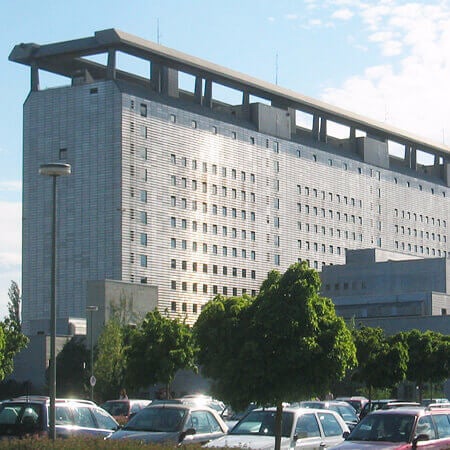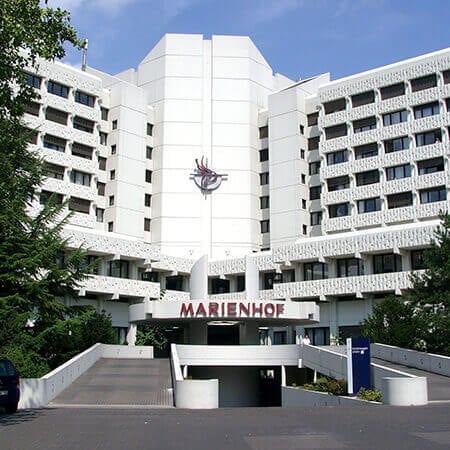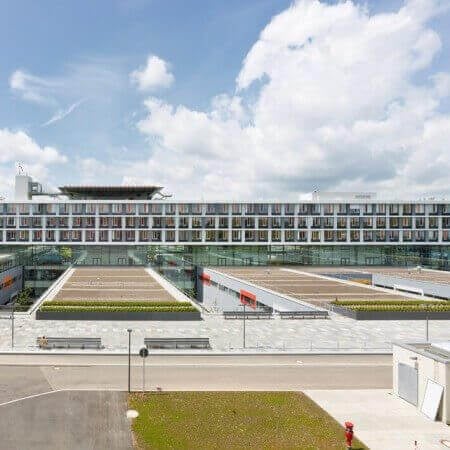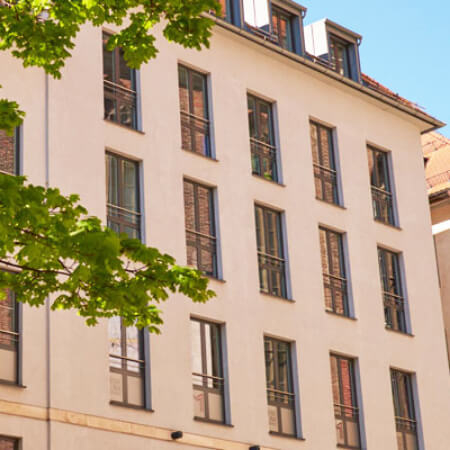Hypospadias
Hypospadias is a congenital defect of the penis structure that is manifested by a misplaced urethral orifice (urethra meatus) and abnormal penile curvature. Hypospadias is a pretty common phenomenon, which is detected in 0.5% of newborn boys. It is only possible to treat this defect with the help of surgery.
The Booking Health portal presents 65 German clinics specializing in hypospadias treatment
Show all clinics
Hypospadias – Diagnostics
Normally, hypospadias is easy to diagnose while examining patient’s reproductive organs, but there are additional techniques that help to clarify the nature of the malformed penis structure, such as:
- Ultrasound examination
- Ureteroscopy
- Ureterography
- Uroflowmetry
- MRI of the pelvic organs
Hypospadias is often just one of many chromosomal abnormalities manifestations. Thus, patients are recommended to go through karyotyping in order to determine the number and structure of chromosomes in the cells. This examination is necessarily prescribed if hypospadias is diagnosed together with cryptorchidism (undescended testicles) or other signs of chromosomal and genetic syndromes. Moreover, the procedure verifies the patient’s sex. Sometimes hypospadias is misdiagnosed in girls suffering from the hypertrophic clitoris.
Best clinics for the hypospadias diagnostics in Germany:
Hypospadias – Treatment
Surgery is the only way to deal with hypospadias. Several purposes must be reached in the course of surgery:
- Correction of cavernous bodies to ensure a normal erection
- Creation of the urethra, which is formed from tissues deprived of hair follicles, without strictures (contractions) and with normal blood supply
- Formation of the longitudinal location of the meatus (urethral orifice) and its replacement on the top of the glans penis
- Ensuring a normal process of urination: without difficulties, urine sprays etc
- Providing a good aesthetic effect, so that in the future the patient could have a full sexual life
Patients undergo surgery at the age from 6 months to 1.5 years old. This age is the most optimal time to perform an operation, as cavernous bodies’ size is still small and amount of plastic material (primarily the skin of the penis) is already sufficient for successful urethroplasty. In addition, surgery is not likely to affect the patient’s mental condition at such a young age. Older kids might develop an inferiority complex after the surgery and recovery.
Different clinics apply various types of surgeries. Nowadays, there are more than 200 kinds of operations that can be used for hypospadias treatment.
Choice of the surgical technique is made relying on:
- Clinical case (the type of hypospadias).
- Age and the patient’s overall health, as there can be some other defects in the structure of the genitourinary system.
- Hospital’s professional and technical level, as certain operations require the state-of-art equipment. Hence, if you can afford, it is better to undergo surgery in German hospitals.
During the plastic surgery for correction of the anatomical structures with the irregular formation, the following materials can be used:
- Patient's own tissues taken from the penis
- Own tissues taken from other body parts
- Products of tissue engineering
A surgeon does his best to reach all the purposes during a single intervention, though some patients may require several consecutive operations.
Hypospadias – Innovative treatment
The aim of hypospadias treatment is the same as a hundred years ago. However, nowadays we have much more possibilities. German hospitals, in particular, actively implement latest developments of tissue engineering.
This means, that a small skin flap of 1 to 3 square centimeters is obtained from a patient and sent to the laboratory. Several weeks later the flap turns into a three-dimensional cellular structure fixed on a biodegradable matrix. The urethra is formed from the obtained dermal equivalent during the surgical operation.
Normally, tissue engineering is used for the scrotal and perineal urethroplasty. This allows to reach the following aims:
- Solve the problem of autologous (own) plastic material deficiency, especially in early childhood
- Improve the aesthetic effect (a smaller amount of plastic material is taken from a patient)
- Reduce the risk of complications, especially hair growth from the newly formed urethra
Best clinics for the hypospadias treatment in Germany:

University Hospital of Ludwig Maximilian University of Munich

Catholic Clinic Koblenz-Montabaur

University Hospital Ulm
Hypospadias – Rehabilitation
Rehabilitation is the process of body restoration from injuries, surgeries or diseases. It can have a different orientation such as: oncological, orthopedic, neurological, etc. There is also general therapeutic rehabilitation. It is indicated for patients after conservative and surgical treatment of the internal organs diseases.
The directions of the general therapeutic rehabilitation
There are several main directions of the therapeutic rehabilitation such as:
- Medical one, which includes the restoration of patient's health, normalization of body functions, stimulation of compensatory possibilities, elimination of the chronic pain, etc.
- Physical one, which is responsible for improving of work capacity and tolerance for physical activities. In the complex cases, the purpose of this therapeutic rehabilitation area may be the restoration of the self-service ability.
- Psychological one, which helps to eliminate the mental disorders which may occur as a result of a disease (phobias, depression, apathy), to increase the human motivation, and to adapt to the changed living conditions.
The World Health Organization underlines 3 phases of rehabilitation such as: hospital phase, a phase of recovery and supporting phase. Different tasks are solved in different phases. The hospital phase is conducted immediately after the treatment. After the first phase begins the second one which usually takes place in sanatoriums or rehabilitation centers. This is the boundary between two periods, namely illness and future life. Then a supporting phase is required. The patient maintains the achieved level of his health and physical activity at home or visits the rehabilitation center from time to time.
Therapeutic rehabilitation methods
The most modern rehabilitation programs are used in Germany. They are adapted individually for each patient, and are based on the recent disease, age, physical possibilities, and the results of treatment. Different specialists such as: therapists, psychologists, rehabilitators, kinesiotherapists, physiotherapists are involved in the rehabilitation process.
The following methods of rehabilitation are used:
- Dosed physical activity
- Training on the simulators and in the pool
- Physiotherapy
- Acupuncture
- Manual therapy
- Microcurrent therapy
- Compression therapy
- Lymphatic drainage
- Natural factors of the nature (mud, thermal waters, etc.)
Any rehabilitation may include medicamentous support. It is necessary to hold a consultation with the patient about the proper nutrition and the way of life which is important for him in the current situation.
Rehabilitation programs in Germany are designed for 2 weeks. If necessary, they can last much longer. In this country, the patient is provided with qualitative care, accommodation in comfortable rooms and individually selected meals.
Rehabilitation programs in Germany show one of the best results in the world. Most patients successfully restore their employability and excellent health there. They remain physically active, return to the full social and family life.
Author:
The article was edited by medical expert, board certified Dr. Nadezhda Ivanisova. For the treatment of the conditions referred to in the article you must consult a doctor; the information in the article is not intended for self-medication!
Sources:
Centers for Disease Control and Prevention
The cost of services includes
Here you can find the cost of treatment for this disease at the German University Hospitals. Leave a request and we will provide a free consultation with a doctor and will start organizing the whole treatment process.
The program includes the following:
- Issuing of an invitation for getting a visa for treatment as quick as possible
- Fixing an appointment at a time convenient for you
- Preliminary organization of a comprehensive examination and discussion of the forthcoming treatment plan
- Arranging transfer from the airport to the hospital and back to the airport
- Provision of interpreting services and services of a personal medical coordinator
- If necessary, assistance in the organization of further surgical treatment
- Provision of a medical insurance against treatment complications covering up to 200,000 euro
- Preparation and translation of medical records and recommendations from the hospital
- Assistance in the subsequent communication with your attending physician, including consultations on repeated X-ray images through the unique medical document management system E-doc


